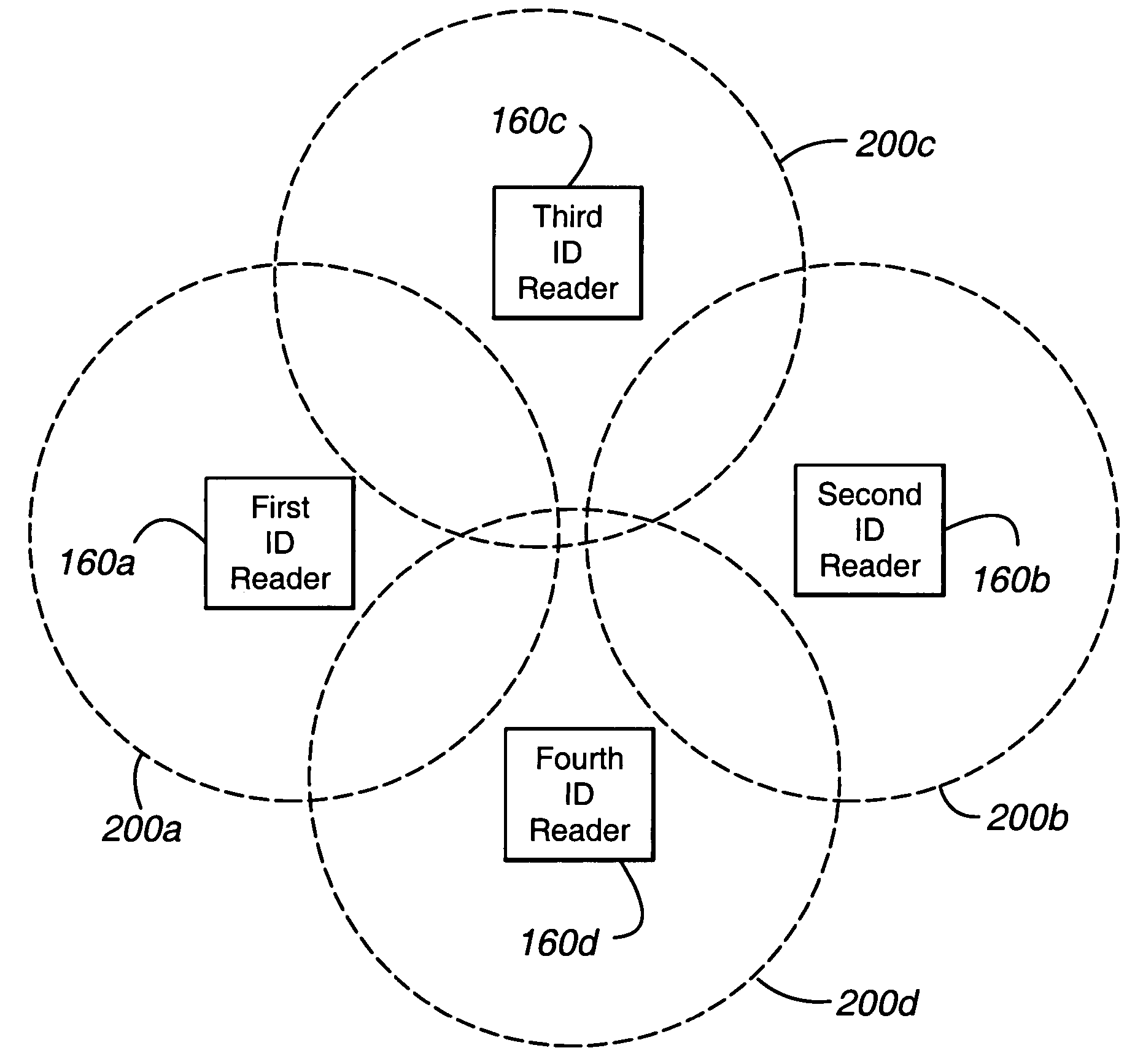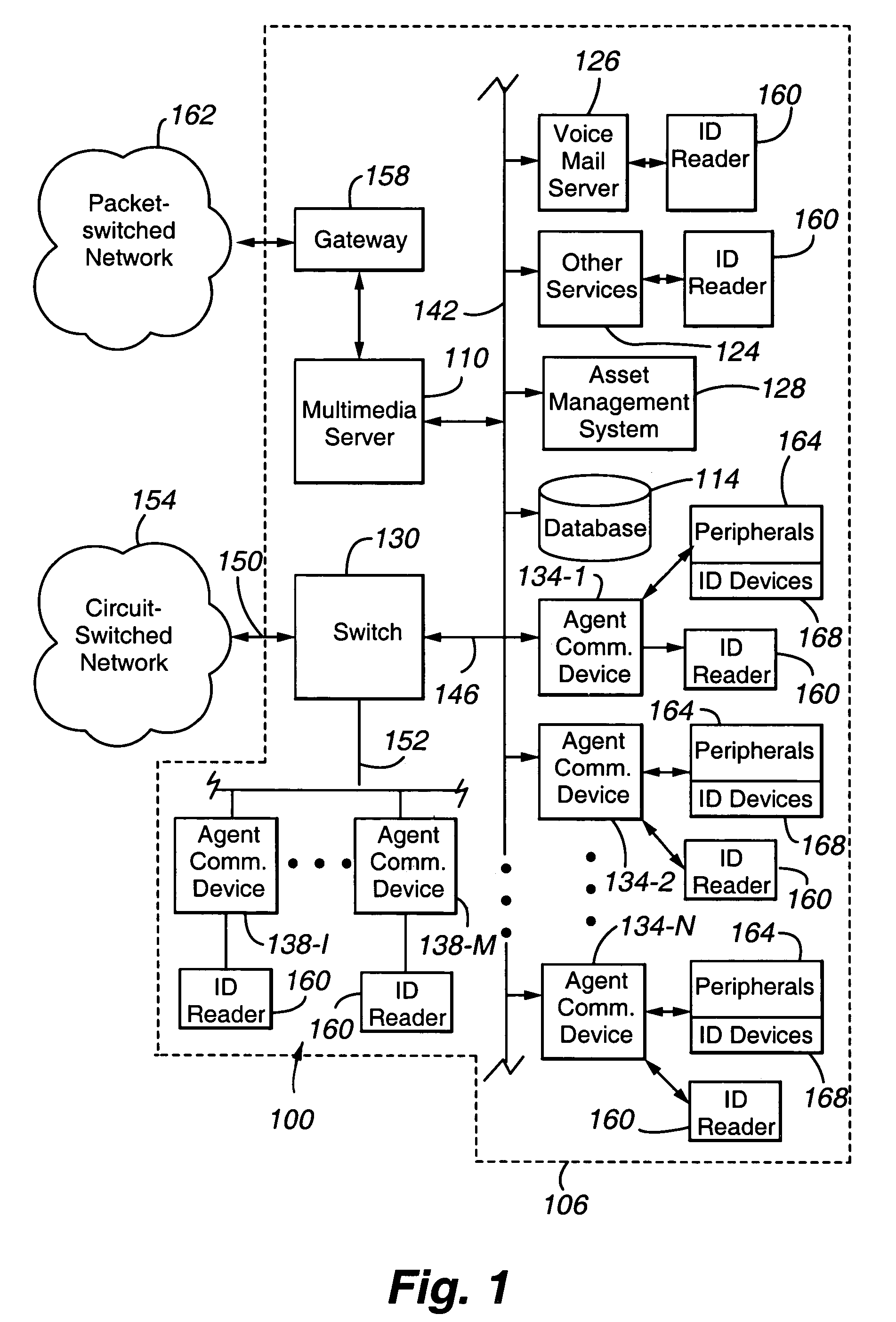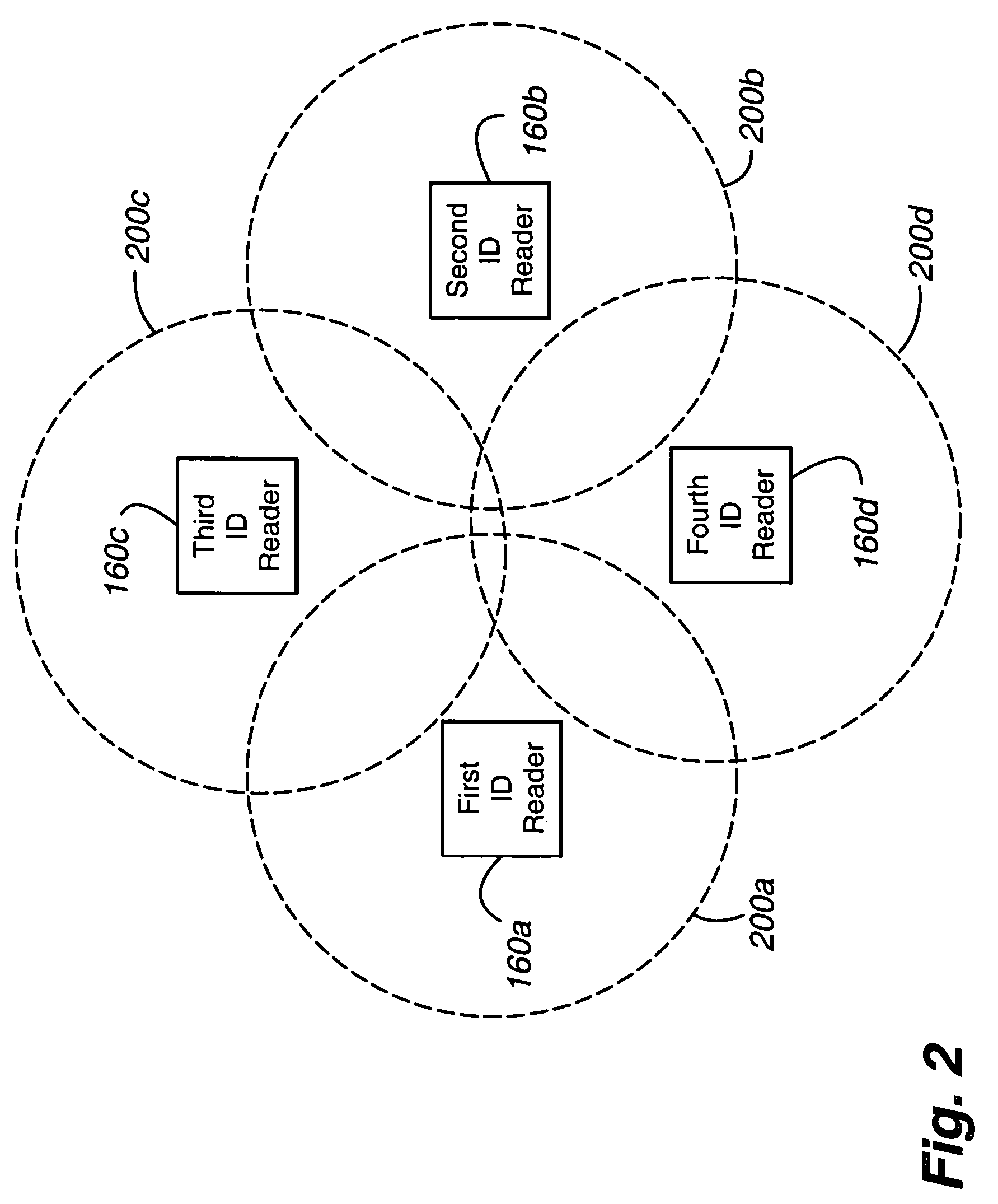Integrated real-time automated location positioning asset management system
an asset management system and real-time automatic technology, applied in the field of object tracking, can solve the problems of difficult techniques, inconvenient use, and inability to automate identification systems, and achieve the effects of low or no power, significant signal strength advantage, and cheap and effective way
- Summary
- Abstract
- Description
- Claims
- Application Information
AI Technical Summary
Benefits of technology
Problems solved by technology
Method used
Image
Examples
Embodiment Construction
[0022]The invention will be illustrated below in conjunction with an exemplary communication system. Although well suited for use with, e.g., a system having a private branch exchange (PBX) or other similar contact processing switch or server, the invention is not limited to use with any particular type of communication system switch or server or configuration of system elements. Those skilled in the art will recognize that the disclosed techniques may be used in any communication application in which it is desirable to provide improved contact processing directed from an external network into a PBX or other communication system switch or server.
[0023]FIG. 1 shows an exemplary communication system 100 in which the invention is implemented. The system 100 includes a multi-media server 110 that serves a premises 106, including circuit-switched communication devices 138-1, . . . 138-M that are subscribers to the server 102, a Local Area Network 142 that serves a number of communication...
PUM
 Login to View More
Login to View More Abstract
Description
Claims
Application Information
 Login to View More
Login to View More - R&D
- Intellectual Property
- Life Sciences
- Materials
- Tech Scout
- Unparalleled Data Quality
- Higher Quality Content
- 60% Fewer Hallucinations
Browse by: Latest US Patents, China's latest patents, Technical Efficacy Thesaurus, Application Domain, Technology Topic, Popular Technical Reports.
© 2025 PatSnap. All rights reserved.Legal|Privacy policy|Modern Slavery Act Transparency Statement|Sitemap|About US| Contact US: help@patsnap.com



